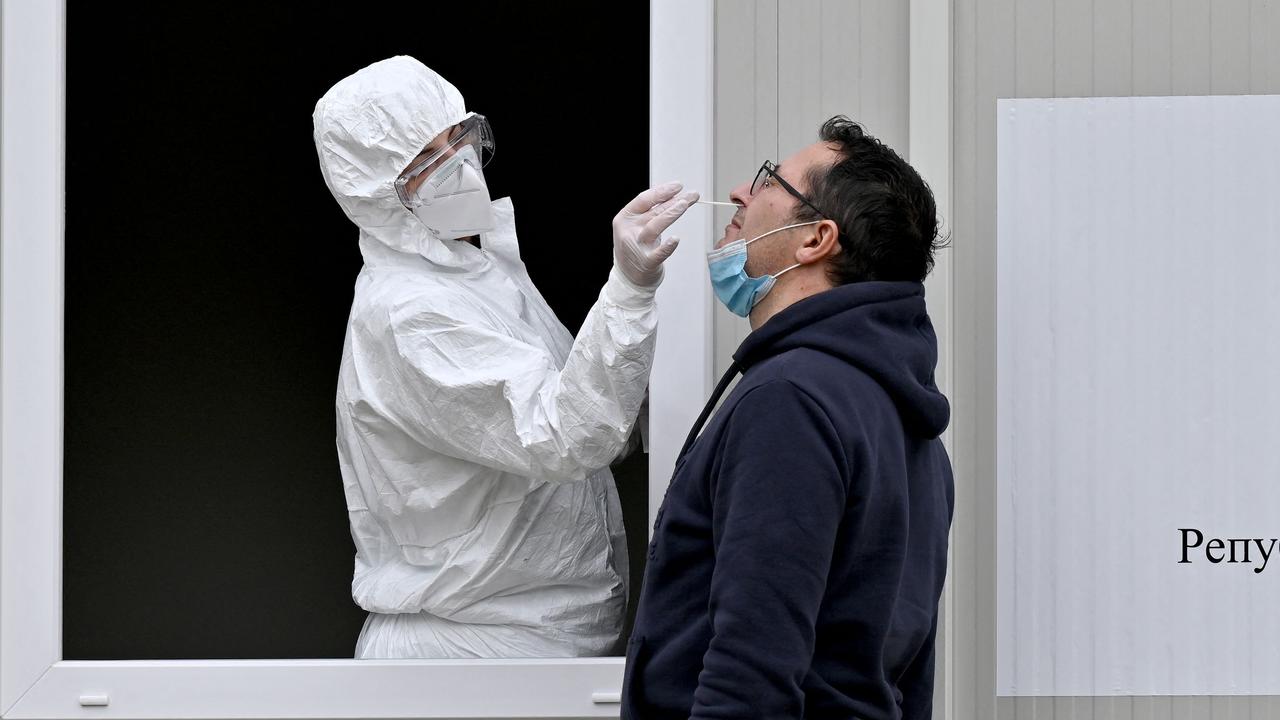How COVID-19 will double the waiting list for non-urgent surgery
A ban on non-urgent surgery to free up beds for COVID-19 patients is set to double waiting lists for surgery in public hospitals and it could take years to clear. Here’s why.
Exclusive: About half a million people needing surgery like hip and knee replacements could be waiting 18 months or longer for their surgery as a result of COVID-19.
All non-urgent elective surgery has been cancelled so hospital beds can be freed up for patients suffering coronavirus.
But ironically as the waiting lists balloon, hundreds of hospital beds in the private sector are laying idle — leaving both private and public patients facing lengthy waits for surgery.
Orthopaedic surgeon and former West Australian Medical Association president Dr Omar Khorshid said he had not performed a single operation for two weeks and some private hospitals were functioning at just 15 per cent capacity.
Waiting times for elective surgery were already at record highs but a new analysis by consultancy firm MST Marquee is predicting they will double if the surgery ban lasts three months.

The number of patients waiting for surgery will also jump from 300,000 to more than 425,000.
Public and private hospitals would need to work around the clock and open on weekends to clear the backlog.
“Unless there is a surgery blitz, waiting times of one and a half years is a real prospect,” MST Marquee consultant Andrew Goodsall said.
Currently people who need surgery like hip and knee replacements are waiting an average 270 days for surgery. This could blow out to 445 days.
Even cancer patients are affected with some men unable to get surgery for prostate cancer.
Dr Khorshid said breast cancer screening programs had been shut down and public hospital outpatient clinics were not operating normally and this could mean some people might die if their cancers were not picked up and operated on.
MORE NEWS
Assange fathered two kids in embassy hide-out
Cash-strapped Aussies warned about deferring mortgages
‘I owe them my life’: Boris thanks hospital staff
AMA president Dr Tony Bartone last week pleaded with patients to take advantage of new telehealth consultations and keep in touch with their doctors.
Many general practitioners have seen a 20 to 50 per cent slump in their business as people put off seeing a doctor fearing they could catch COVID-19 in a medical waiting room.
“The COVID-19 fear is understandable but for some people it could mean a medical condition like cancer or heart disease will go undetected,” Dr Bartone said.
There are three categories of patients on the waiting list.
Category one patients need urgent surgery and they are still getting treated.
Category two patients need surgery within three months and around half of these people are still getting their surgery.
Category three patients (those needing hip and knee replacements) need surgery within 12 months and none of them are being treated at present.

Normally around 105,000 category three operations are performed in private hospitals every month and a further 20,000 are done in the public sector.
Some private day surgeries started laying off staff a few weeks ago because the surgery ban meant there was no work for them to do and the hospitals were idle forcing governments to broker a rescue package.
Non-urgent surgery was cancelled because patients often need a stay in intensive care units after their operation and the government wants these beds kept clear for COVID-19 patients.
Australia has been so successful in controlling the spread of COVID-19 less than 100 of the 2200 intensive care beds available have so far been required for victims of the virus.
And fewer than 300 COVID-19 patients are in hospital.

Mr Goodsall said even though category three surgery was classified as non-urgent many patients were in enormous pain and unable to live a normal life until the surgery was done.
His mother’s 81-year-old friend needs hip replacement and is in agony with bone-on-bone pain and unable to walk.
She has private health insurance but her surgery is now deferred for foreseeable future, he said.
Dr Khorshid said surgeons, like other Australians, were prepared to do their bit to free up personal protective gear and hospital beds for the coronavirus fight.
However, he said once there was enough supply of face masks and other gear and the COVID-19 outbreak appeared under control it would be important to quickly get private hospitals working again.


